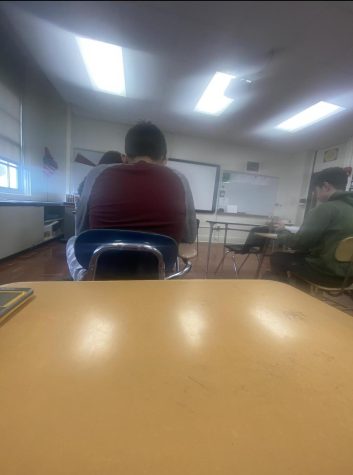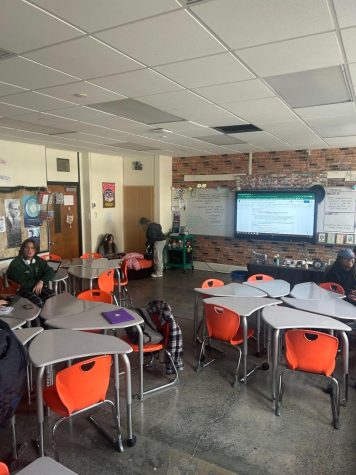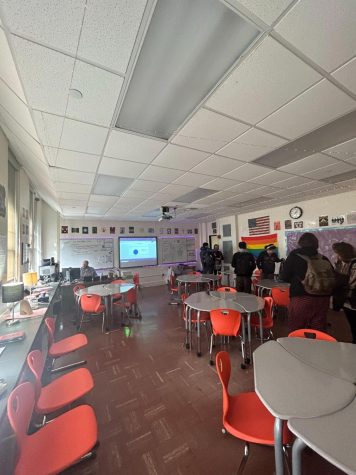Teachers: Classroom Decor Matters!
March 14, 2023
When you change classrooms throughout the day, do you ever feel like you work better in some classrooms than others? Either you are sitting in a hot classroom with the bright florescent lights shining in your eyes at 7:30 am or you are sitting in your comfier chair that the IB students get, with lighting that doesn’t give you a headache and actually makes you feel relaxed. Teachers – when you’re decorating your classroom, think about how well your students will perform in it.
Stereotypically, certain subjects have more comfortable classroom layouts, such as English. Almost every English class I have had (or even set foot in) had some of the most relaxing layouts, with nice chairs and extra lights such as lamps or string lights. These classes also feel much more welcoming, with posters saying things like “hate has no home here.” Extra details like these that teachers have decided to put in their classrooms help to create an environment that makes it much easier to work and focus.
Classes where teachers make no sort of effort in the class and leave it unorganized make it very hard to work and keep focused. It makes students want to “go to the bathroom” when they really just need to go take a walk so they don’t get a headache from the heat or the lighting around them. This could lead to even more drastic consequences: if kids don’t want to be in class, they miss a lesson, they fall behind, and their grade drops. If more teachers would make an effort in their classrooms, their students could be more engaged.
Some examples of classes that I personally like would be ones that have good sunlight and comfortable seating arrangements. And some I don’t like are ones that have nasty overhead lighting that make you feel like everything is blurry. Two of my favorite classrooms and one of my least favorite classrooms are pictured below. *Disclaimer: the teacher who had my least favorite classroom doesn’t teach here anymore, so it has changed since then.


There are many studies that have proved this point being that a classroom’s design could help student’s achievement. One study by Sapna Cheryan, Sianna A. Ziegler, Victoria C. Plaut, and Andrew N. Meltzoff, shows that “Classroom physical environments- both facilities (noise, lighting) and symbolic (everyday objects) – affect student achievement”. A study from the National Center for Education showed that students that are exposed to more daylight can score between 2%-26% better on tests rather than less; the study also found that many classrooms across the country have very unsatisfactory amounts of daylight. Along with lighting, other studies have gone deep into characteristics of a classroom environment such as acoustics, temperature, air quality, and accessibility greatly influence students’ achievement.
One important aspect of a classroom is the seating layout, where rows and columns are more organized and make students stay on task and clusters of desks make students trail off easily. Also, objects and decor make or break the classroom you are in; these things make you feel welcomed and comfortable in the environment you are working in and lead you to success.
Comparing these factors to what we experience on a day-to-day basis in school makes us think about how they apply towards some of our classrooms, both good and bad. Also, it puts into perspective that we do have it alot better than some schools – even if it doesn’t feel like it sometimes when we get headaches, there are loud fights in the hallways, or at the end of the year when it’s unbearably hot.





